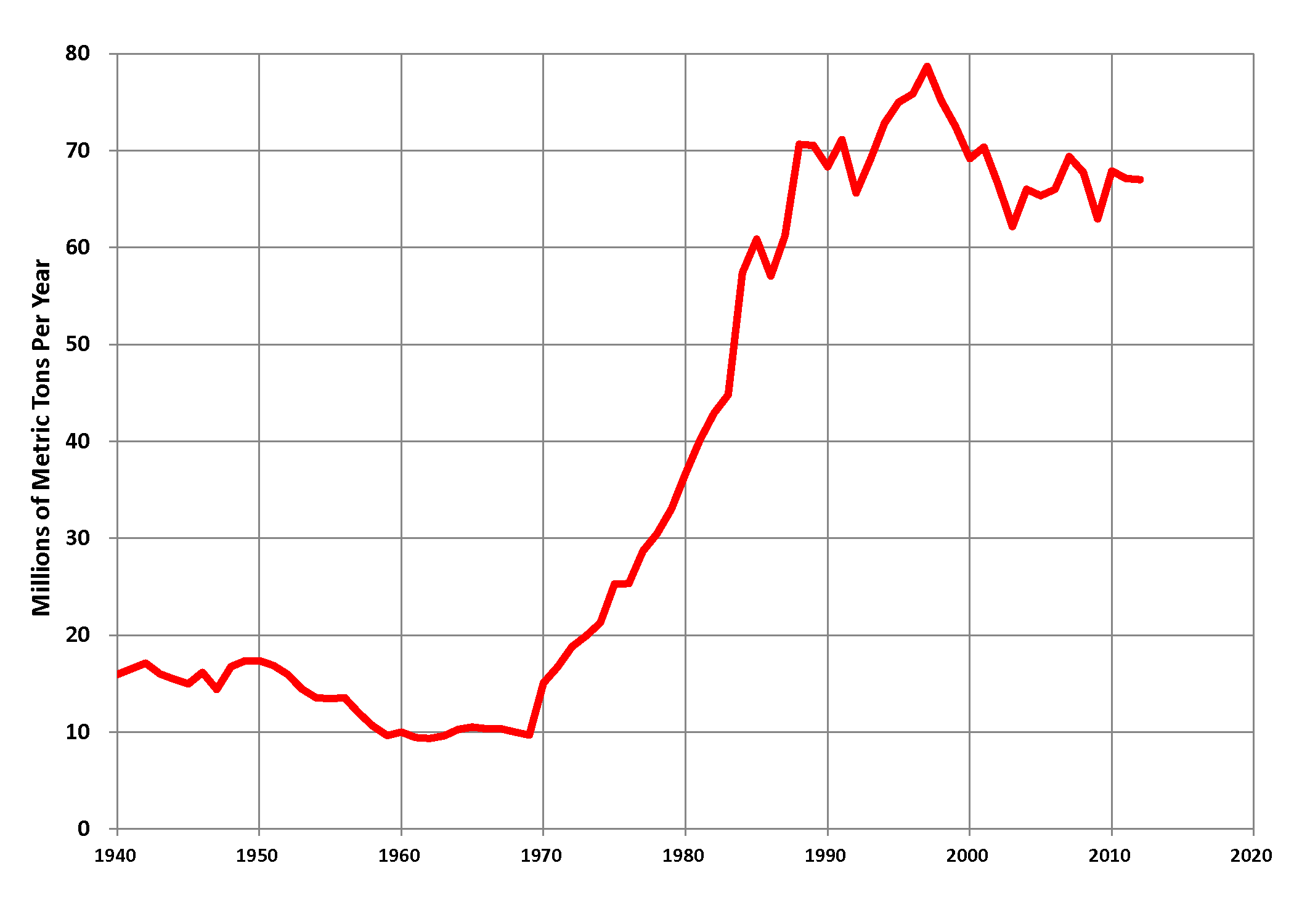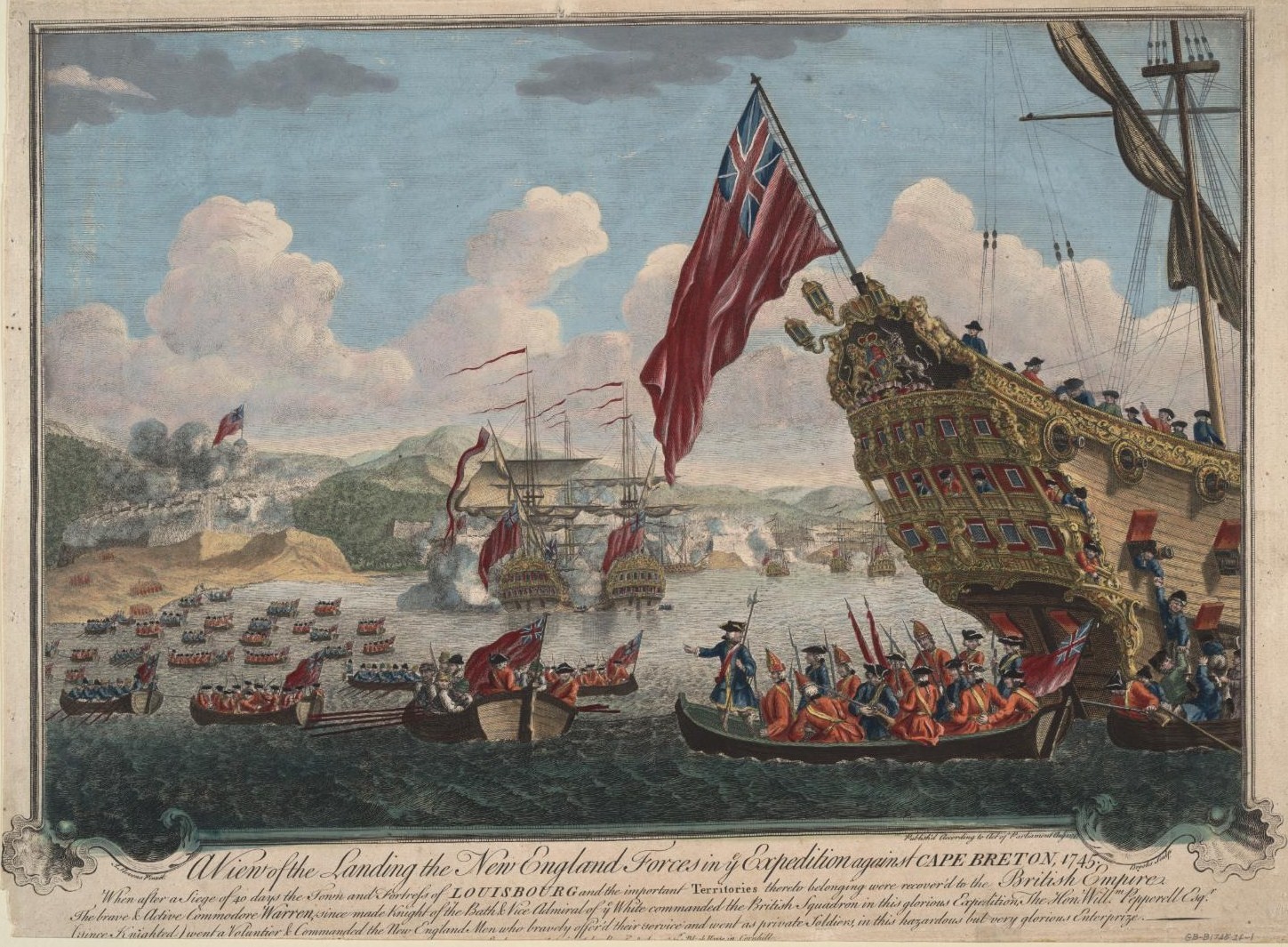|
Coal In Canada
Coal reserves in Canada rank 13th largest in the world (following the former Soviet Union, the United States, the People's Republic of China and Australia) at approximately 10 billion tons, 0.6% of the world total. This represents more energy than all of the oil and gas in the country combined. The coal industry generates CDN$5 billion annually. Most of Canada's coal mining occurs in the west of the country. British Columbia operates nine coal mines, Alberta nine, Coal mining in Saskatchewan, Saskatchewan three and New Brunswick one. Nova Scotia operates several small-scale mines, Westray Mine, Westray having closed following the 1992 disaster there. In 2005, Canada produced 67.3 million tons of coal and its consumption was 60 million tons. Of this 56 million tons were used for electricity generation. The remaining four million tons was used in the steel, concrete and other industries. [...More Info...] [...Related Items...] OR: [Wikipedia] [Google] [Baidu] [Amazon] |
Metallurgical Coal
Metallurgical coal or coking coal is a grade of coal that can be used to produce good-quality coke. Coke is an essential fuel and reactant in the blast furnace process for primary steelmaking. The demand for metallurgical coal is highly coupled to the demand for steel. Primary steelmaking companies often have a division that produces coal for coking, to ensure a stable and low-cost supply. Metallurgical coal comes mainly from Canada, the United States, and Australia, with Australia exporting 58% of seaborne trade, mostly going to China. In the United States, the electric power sector used "93% of total U.S. coal consumption between 2007 and 2018"; only 7% of the total was metallurgical coal and coal for other uses such as heating. Characteristics Metallurgical coal is low in ash, moisture, sulfur and phosphorus content, and its rank is usually bituminous. Some grades of anthracite coal are used for sintering, pulverized coal injection, direct blast furnace charge, pelletizi ... [...More Info...] [...Related Items...] OR: [Wikipedia] [Google] [Baidu] [Amazon] |
Industrialization
Industrialisation (British English, UK) American and British English spelling differences, or industrialization (American English, US) is the period of social and economic change that transforms a human group from an agrarian society into an industrial society. This involves an extensive reorganisation of an economy for the purpose of manufacturing. Industrialisation is associated with increase of Pollution, polluting industries heavily dependent on fossil fuels. With the increasing focus on sustainable development and green industrial policy practices, industrialisation increasingly includes Leapfrogging, technological leapfrogging, with direct investment in more advanced, cleaner technologies. The reorganisation of the economy has many unintended consequences both economically and socially. As industrial workers' incomes rise, markets for consumer goods and services of all kinds tend to expand and provide a further stimulus to industrial investment and economic growth. Moreo ... [...More Info...] [...Related Items...] OR: [Wikipedia] [Google] [Baidu] [Amazon] |
At The Mouth Of A Coal Mine, Edmonton, Alta
AT or at may refer to: Geography Austria * Austria (ISO 2-letter country code) * .at, Internet country code top-level domain United States * Atchison County, Kansas (county code) * The Appalachian Trail (A.T.), a 2,180+ mile long mountainous trail in the Eastern United States Elsewhere * Antigua and Barbuda, World Meteorological Organization country code * Ashmore and Cartier Islands (FIPS 10-4 territory code, and obsolete NATO country code) * At, Bihar, village in Aurangabad district of Bihar, India * Province of Asti, Italy (ISO 3166-2:IT code) * Australia, LOC MARC code Politics * Awami Tahreek a left-wing Pakistani political party Science and technology Computing * @ (or "at sign"), the punctuation symbol now typically used in e-mail addresses and tweets) * at (command), used to schedule tasks or other commands to be performed or run at a certain time * IBM Personal Computer/AT ** AT (form factor) for motherboards and computer cases ** AT connector, a five-pin ... [...More Info...] [...Related Items...] OR: [Wikipedia] [Google] [Baidu] [Amazon] |
Louisbourg Fortress
The Fortress of Louisbourg () is a tourist attraction as a National Historic Site and the location of a one-quarter partial reconstruction of an 18th-century French fortress at Louisbourg on Cape Breton Island, Nova Scotia. Its two sieges, especially that of 1758, were turning points in the Anglo-French struggle for what today is Canada. The original settlement was founded in 1713 by settlers from Terre-Neuve, and initially called Havre à l'Anglois. Subsequently, the fishing port grew to become a major commercial port and a strongly defended fortress. The fortifications eventually surrounded the town. The walls were constructed mainly between 1720 and 1740. By the mid-1740s Louisbourg, named for Louis XIV of France, was one of the most extensive (and expensive) European fortifications constructed in North America. The site was supported by two smaller garrisons on Île Royale located at present-day St. Peter's and Englishtown. The Fortress of Louisbourg suffered key weaknes ... [...More Info...] [...Related Items...] OR: [Wikipedia] [Google] [Baidu] [Amazon] |
Cape Breton Island
Cape Breton Island (, formerly '; or '; ) is a rugged and irregularly shaped island on the Atlantic coast of North America and part of the province of Nova Scotia, Canada. The island accounts for 18.7% of Nova Scotia's total area. Although the island is physically separated from the Nova Scotia peninsula by the Strait of Canso, the long Canso Causeway connects it to mainland Nova Scotia. The island is east-northeast of the mainland with its northern and western coasts fronting on the Gulf of Saint Lawrence with its western coast forming the eastern limits of the Northumberland Strait. The eastern and southern coasts front the Atlantic Ocean with its eastern coast also forming the western limits of the Cabot Strait. Its landmass slopes upward from south to north, culminating in the Cape Breton Highlands, highlands of its northern cape. A large body of saltwater, the ("Golden Arm" in French), dominates the island's centre. The total population at the 2016 Canadian Census, 20 ... [...More Info...] [...Related Items...] OR: [Wikipedia] [Google] [Baidu] [Amazon] |
Port Morien
Port Morien (also referred to as "Morien") is a small fishing community of 700 people in the Canadian province of Nova Scotia, located in the southeastern Cape Breton Island near the rural community Donkin, and six miles from the town of Glace Bay. Name Port Morien was first recorded as "Baie de Mordienne" on a map in 1580. In the nineteenth century, it was renamed Cow Bay by settlers. A cow allegedly escaped from a vessel when being transported from Sydney to Louisbourg and was found in the area. In 1895, its name was changed to Port Morien. History The history of Port Morien can be traced back to the early 18th century, when the area was first settled by French and Scottish immigrants. The town quickly developed into a thriving fishing and mining community, with a bustling port and a thriving economy. In the late 20th century, Port Morien faced a number of economic challenges, as the fishing and mining industries declined and many residents left the area in search of wo ... [...More Info...] [...Related Items...] OR: [Wikipedia] [Google] [Baidu] [Amazon] |
New France
New France (, ) was the territory colonized by Kingdom of France, France in North America, beginning with the exploration of the Gulf of Saint Lawrence by Jacques Cartier in 1534 and ending with the cession of New France to Kingdom of Great Britain, Great Britain and History of Spain (1700–1808), Spain in 1763 under the Treaty of Paris (1763), Treaty of Paris. A vast viceroyalty, New France consisted of five colonies at its peak in 1712, each with its own administration: Canada (New France), Canada, the most developed colony, which was divided into the districts of Quebec (around what is now called Quebec City), Trois-Rivières, and Montreal; Hudson Bay; Acadia in the northeast; Terre-Neuve (New France), Terre-Neuve on the island of Newfoundland (island), Newfoundland; and Louisiana (New France), Louisiana. It extended from Newfoundland to the Canadian Prairies and from Hudson Bay to the Gulf of Mexico, including all the Great Lakes of North America. The continent-traversing ... [...More Info...] [...Related Items...] OR: [Wikipedia] [Google] [Baidu] [Amazon] |
First Nations In Canada
''First Nations'' () is a term used to identify Indigenous peoples in Canada who are neither Inuit nor Métis. Traditionally, First Nations in Canada were peoples who lived south of the tree line, and mainly south of the Arctic Circle. There are 634 recognized List of First Nations band governments, First Nations governments or bands across Canada. Roughly half are located in the provinces of Ontario and British Columbia. Under Canadian Charter of Rights and Freedoms, Charter jurisprudence, First Nations are a "designated group", along with women, Visible minority, visible minorities, and people with physical or mental disabilities. First Nations are not defined as a visible minority by the criteria of Statistics Canada. North American indigenous peoples have cultures spanning thousands of years. Many of their oral traditions accurately describe historical events, such as the 1700 Cascadia earthquake, Cascadia earthquake of 1700 and the 18th-century Tseax Cone eruption. Writ ... [...More Info...] [...Related Items...] OR: [Wikipedia] [Google] [Baidu] [Amazon] |
Grand Lake, New Brunswick
Grand Lake (officially Municipality of Grand Lake) is an incorporated village, straddling the boundary of Sunbury County and Queens County, New Brunswick, Canada. It was formed through the 2023 New Brunswick local governance reforms by amalgamating the villages of Chipman and Minto, and certain previously unincorporated areas of Northfield Parish, Canning Parish, Sheffield Parish, and Harcourt Parish, contiguous to the area. The municipality is divided into four wards. History Grand Lake was incorporated on January 1, 2023 via the amalgamation of the former villages of Minto and Chipman as well as the concurrent annexation of adjacent unincorporated areas. Coal Mining Industry File:Minto Memorial Stone 2013, Minto, New Brunswick.jpg, The memorial stone of five who died in an abandoned mine shaft in 1932, Grand Lake, New Brunswick, Canada. File:Minto Memorial Stone Inscription, Minto, New Brunswick.jpg, The inscription (1982) on the Minto Memorial Stone. The G ... [...More Info...] [...Related Items...] OR: [Wikipedia] [Google] [Baidu] [Amazon] |
List Of Countries By Coal Production
This is a list of countries by coal production ranking countries with coal production larger than 5 million tonnes as of 2023. References {{DEFAULTSORT:Coal production Energy-related lists by country Production by country Lists of countries by mineral production Coal-related lists ... [...More Info...] [...Related Items...] OR: [Wikipedia] [Google] [Baidu] [Amazon] |
Global Warming
Present-day climate change includes both global warming—the ongoing increase in global average temperature—and its wider effects on Earth's climate system. Climate change in a broader sense also includes previous long-term changes to Earth's climate. The current rise in global temperatures is driven by human activities, especially fossil fuel burning since the Industrial Revolution. Fossil fuel use, deforestation, and some agricultural and industrial practices release greenhouse gases. These gases absorb some of the heat that the Earth radiates after it warms from sunlight, warming the lower atmosphere. Carbon dioxide, the primary gas driving global warming, has increased in concentration by about 50% since the pre-industrial era to levels not seen for millions of years. Climate change has an increasingly large impact on the environment. Deserts are expanding, while heat waves and wildfires are becoming more common. Amplified warming in the Arctic has c ... [...More Info...] [...Related Items...] OR: [Wikipedia] [Google] [Baidu] [Amazon] |




